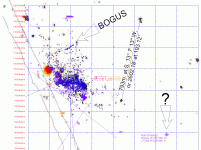billinstuart
Hero Member
- Joined
- Oct 17, 2004
- Messages
- 578
- Reaction score
- 11
- Golden Thread
- 0
- Detector(s) used
- Minelab Excalibur with a WOT!
- Primary Interest:
- Beach & Shallow Water Hunting
Re: accounting for the 1715 fleet vessels by their own " offical records"
Thanks, Goldminer..that's the reference I read somewhere. Crossing the southern Bahamas, the storm likely followed the warm waters of the Florida Current for a while. If so, it intensified from the warm water fueling the storm.
I personally concur with Ivans assessment of the track 100%, especially considering the south Bahamas report. However, we're all just speculating.
Thanks, Goldminer..that's the reference I read somewhere. Crossing the southern Bahamas, the storm likely followed the warm waters of the Florida Current for a while. If so, it intensified from the warm water fueling the storm.
I personally concur with Ivans assessment of the track 100%, especially considering the south Bahamas report. However, we're all just speculating.



 ?
?






